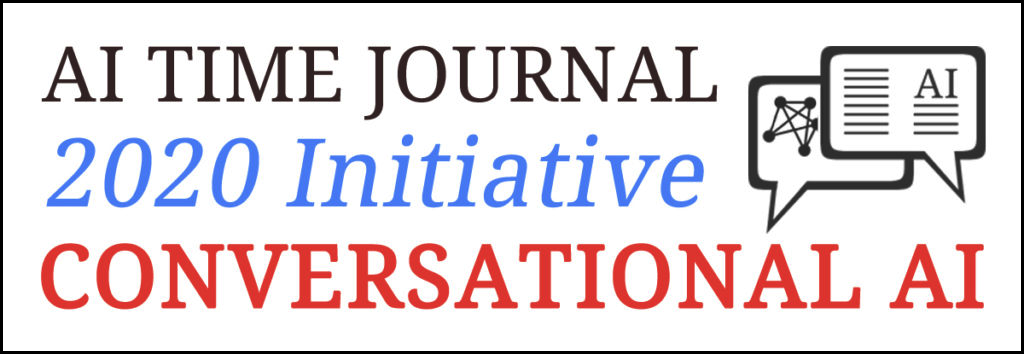
Contact centres require a great deal of investment for organisations – from recruiting and training staff to putting the right tools in place for agents – and yet still often deliver a poor customer experience. Plagued by long wait times, agents dealing with inadequate or incomplete access to information and a disconnect from digital channels, contact centres are struggling to meet customer service expectations. With industry experts predicting the year 2020 as the point when customer experience (CX) will overtake product and price as the number one way companies will differentiate themselves from the competition, organisations can’t risk ignoring these common contact centre issues.
This article has been featured in the Conversational AI Initiative 2020.

Smart companies are working hard to better their CX. Organisations everywhere are embarking on digital CX initiatives in an effort to improve their experience, build loyalty and increase sales. Conversational AI is increasingly an important piece of these initiatives with chatbots and virtual agents becoming essential tools for providing 24/7 self-service to digital customers. Available on websites, messaging apps like Facebook Messenger and WeChat, and smart speakers like Amazon Alexa and Google Home, chatbots are helping organisations deal with the growing number of customer touch points.
Yet, all too often these digital initiatives and conversational AI strategies ignore the contact centre. This creates expensive silos that damage the customer’s experience. A truly successful strategy goes beyond what customers are experiencing online to include what’s happening in your contact centre.
Chatbots are more than customer self-service tools
Many organisations are utilising conversational AI to create a self-service experience for customers but are overlooking the added benefits of using this technology in the contact centre. Chatbots and virtual agents help maximise on contact centre investments by instantly providing agents with information to assist callers, reducing average call handling times and increasing first contact resolution. Training time for live agents is drastically reduced, and organisations build confidence with customers by assuring consistent communication from all agents. When agents know they always have the information they need at their fingertips, their focus moves from trying to retain knowledge to building better relationships with customers.
The tool understands questions asked in natural language, as well as common abbreviations used by agents, and can guide agents through processes and forms step-by-step as they assist customers. By giving all staff easy access to the same level of knowledge, anyone from support teams to trainers and coaches can step in to answer customer questions with confidence at peak or busy times. Chatbots also lend themselves well to gamification around content awareness, skills training and performance improvements.
Not all chatbots are designed for the contact centre
There’s a record number of chatbot options on the market today, but not all of them have been designed for the contact centre. In fact, many of them are channel-specific solutions that create a disjointed experience for customers. Enterprises serious about creating a seamless CX – and aligning the contact centre directly with the digital function – should avoid those solutions. Here are four tips to help with selecting a conversational AI platform for contact centre agents:
- Centralise knowledge management control: To reap the benefits of using conversational AI within the contact centre – and for customer self-service – you must have a solid foundation in knowledge management. Chatbots and virtual agents can only give accurate responses if they are backed by a knowledgebase with accurate content. Using a single knowledge control centre for both customer-facing and contact centre chatbots creates consistency across channels. It also allows organisations to more easily keep content up-to-date and create a single point of truth.
- Integrate chatbots and live agents: The future of customer engagement lies in humans and machines working together in harmony. By bringing together automated and human support, organisations can create the seamless, omnichannel experience customers want. They can also take advantage of the contact centre becoming the centre of excellence for the knowledge used across customer support channels. Providing a chatbot that works for the specific needs and requirements of the contact centre is key for properly supporting agents and getting the most from this integrated solution. There should be choices to personalise the agent console as well as options for agents to use voice and for the tool to also be deployed on the IVR (interactive voice response) channel.
- Combine artificial intelligence and human input: The foundations of successful chatbots lie in the control of the response given. A hybrid approach of machine learning and human curation of content allows the chatbot to continually improve based on the way it is being used while also enabling companies to maintain control over the reliability of responses. Combining human learnings with AI creates dependable self-service solutions and gives organisations the control they need to comply with industry standards and regulations.
- Work with an experienced vendor: An often-cited barrier to deploying a chatbot by company executives is a lack of internal expertise. So, while selecting a conversational platform that offers the right features and functionality is essential for success, it’s just as important to select a vendor that can provide that experience and knowhow. When an organisation is working with the right provider, they don’t need to have existing internal experience to make the solution successful. The right vendor will be a partner throughout the process, collaborating on a customised chatbot and providing guidance on industry best practices and new innovations.
Be realistic but plan for the future
Before starting to evaluate chatbot offerings for the contact centre, an organisation needs to first determine how the solution will fit into their overall customer experience plan. Just as digital CX initiatives that ignore the contact centre create damaging silos, selecting a tool for the contact centre that ignores other customer channels can create similar issues. It’s crucial for companies to be ambitious, and at the same time realistic, about the role the contact centre currently plays – and the role it should be playing – in their overall CX strategy.
For a more in-depth look at these four tips along with 12 essential questions to ask when selecting chatbot technology for the contact centre, download the whitepaper A Chatbot for Your Contact Centre. With the right conversational AI technology and partner, organisations can maximise on contact centre investments, provide seamless omnichannel customer support and incorporate the contact centre into their digital CX strategy.
